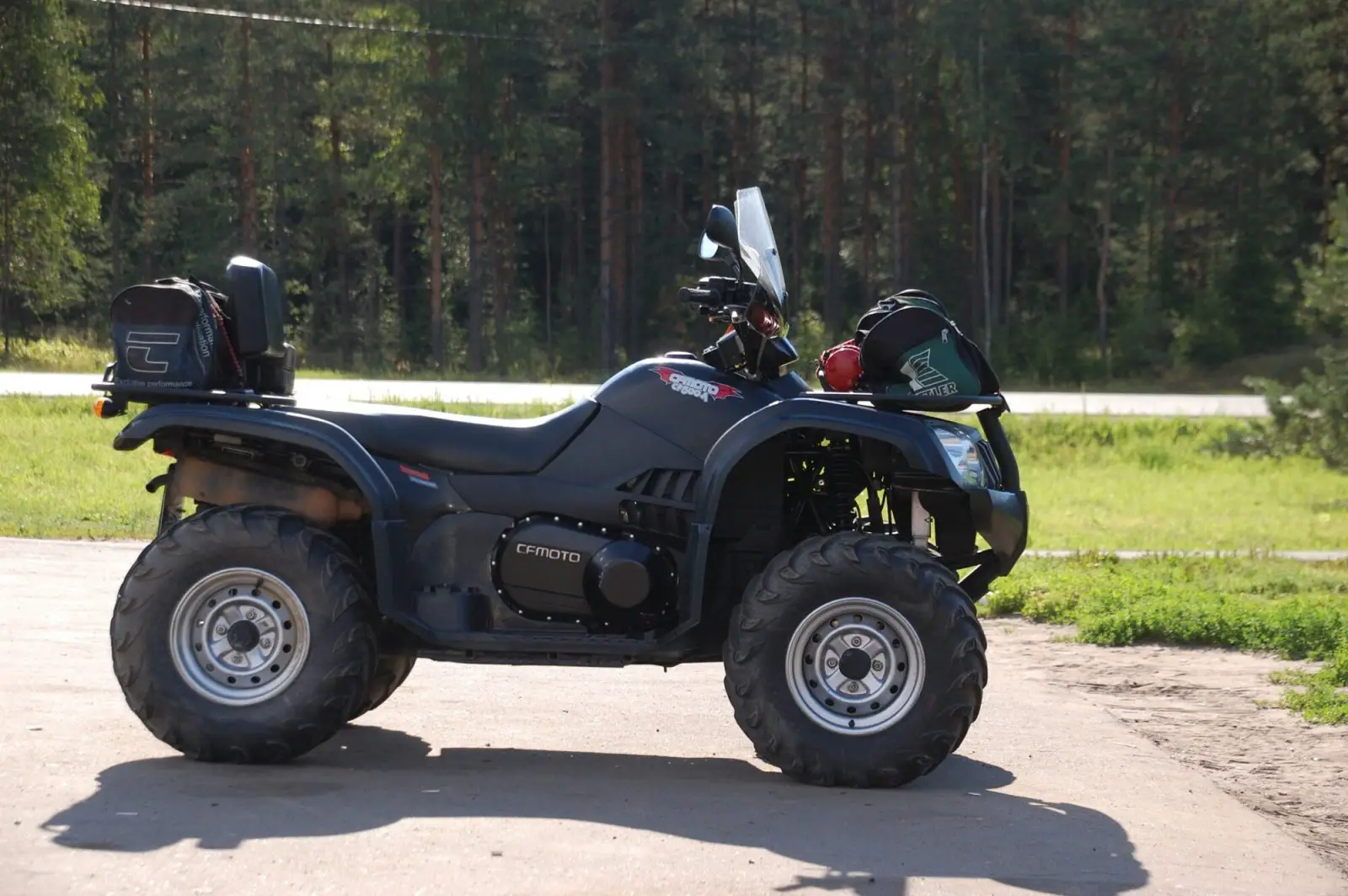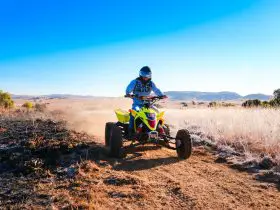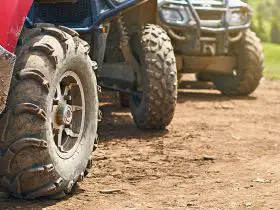The price of gas at the pump has risen steadily throughout 2021. You want to maximize your ATV gas budget and get the best possible fuel economy.
What kind of gas mileage can you expect from your ATV? How can you improve your ATV fuel economy?
You can expect to get around 15-20 mpg from a new or almost-new ATV. Some people will say you’re only going to get 10-12 mpg. However, unless you’re hauling heavy loads while wearing heavy gear and driving through tough conditions, you should get decent gas mileage.
Learn more about the factors that determine ATV fuel economy and how you can get the best possible gas mileage.
Table of Contents
ATV Fuel Economy Standards
Unlike cars and trucks, ATVs don’t have to meet the strict fuel economy standards and regulations from the Environmental Protection Agency (EPA) and other federal agencies. Emissions regulations apply to ATVs, but not fuel economy standards.
The lack of regulation means that ATV manufacturers can design engines for specific purposes. You can find models that excel in areas like work capability, higher payload, or top speed. This is one of the reasons why your gas mileage will vary depending on the type of ATV you ride.
How to Get Better Fuel Economy for Your ATV
Minimal fuel economy saves you money. No matter what type of ATV you have, the way you drive and maintain your ride can improve your gas mileage.
You’ll recognize many of these tips from the advice you’ve gotten about improving the gas mileage in your car. The principles are very similar.
Lighten the Load
Carrying a heavier load makes your ATV motor work harder. It requires more fuel. Reducing the load as much as possible will help you get better fuel economy.
The total weight includes your body weight and gear as well as a trailer and its contents if you’re hauling.
Improve the Aerodynamics
Aerodynamics is the way objects move through the air. You get better fuel economy if you have less air resistance.
The way your ATV was designed is a major factor in how aerodynamic it is. The fairings on your ATV are there partly to improve the aerodynamics. You can add or change ATV plastic if you’re not satisfied with the original design.
Avoid Aggressive Riding
Aggressive riding puts more strain on your ATV, which makes it burn more fuel. Sport performance ATVs in particular can put out impressive horsepower. This is great for racers who can pit for gas whenever they need to.
For regular riders, backing off the throttle most of the time will help your ATV gas budget go further.
Stay on Smoother Trails
A relatively smooth trail means your engine doesn’t have to work as hard. You use less gas.
Smooth terrain is less exciting, though. You can find a balance between having fun and getting better fuel economy.
Check Your Brakes and Clutch
If your brake calipers are dragging or the bearings are worn, your ATV is working harder than normal just to keep moving. A worn clutch can have the same effect if your ATV has a manual transmission. Checking your brakes and clutch regularly will help you address any issues.
Check Your Tire Pressure
Uneven tire pressure can significantly reduce your fuel economy. Low tire pressure on the drive wheels has an especially large effect. The motor has to work harder.
Check the manufacturer’s recommended pressure and follow the guidelines. Depending on where you live, you should check the tire pressure at least once a week. Cold weather causes the tire pressure to drop, and hot weather makes it increase.
Try a Fuel Additive
Fuel-injected ATVs as well as models with a carburetor can benefit from fuel additives that clean the injectors/carburetor. Most automotive additives are intended for use in tanks that are much larger than the tank on an ATV, though. A capful every six fill-ups or so is usually plenty.
ATV Gas Tank Size
Related to questions about ATV fuel economy are questions about how many miles you’ll get for one tank of gas. The gas tank size of ATVs varies by model. Most ATVs have a tank that holds around 3-5 gallons.
You can find the size of your tank in your owner’s manual. Most manufacturers provide the manual and specs online.
To estimate how many miles you’ll get per tank of gas, multiply your average miles per gallon by the gallon size of your tank.
Best Fuel for ATVs
You want to get the most from your ATV gas budget. Using cheaper gas isn’t necessarily the best way to save money, though. The manual for your ATV will tell you what kind of gasoline is best for it.
Most ATVs can use 87 octane gas. Some models are premium only, though. Ethanol gas is usually okay for newer ATVs as long as the ethanol content is no more than 10%.
2-stroke ATVs almost always need premium fuel. They operate at a higher compression rate, and gas with a higher octane rating will withstand more compression.
Avoid Performance Problems
Using inadequate fuel in any ATV will lower your performance. You can experience uneven power delivery, erratic engine reactions, and engine knocks.
The wrong grade of gasoline will lower your fuel economy.
Lower octane fuel burns easier. Using lower octane gas to save money can actually make you spend more. You go through the gas faster.
Get the Most from Your Gas Budget
Most ATVs get decent gas mileage, so worrying about your ATV fuel economy is a non-issue. The right riding techniques, proper maintenance, and the right fuel mean that you’ll be riding longer and spending less on gas.
Check out our ATV comparison page for more practical information like this. We’ll help you get the most from your ATV.










